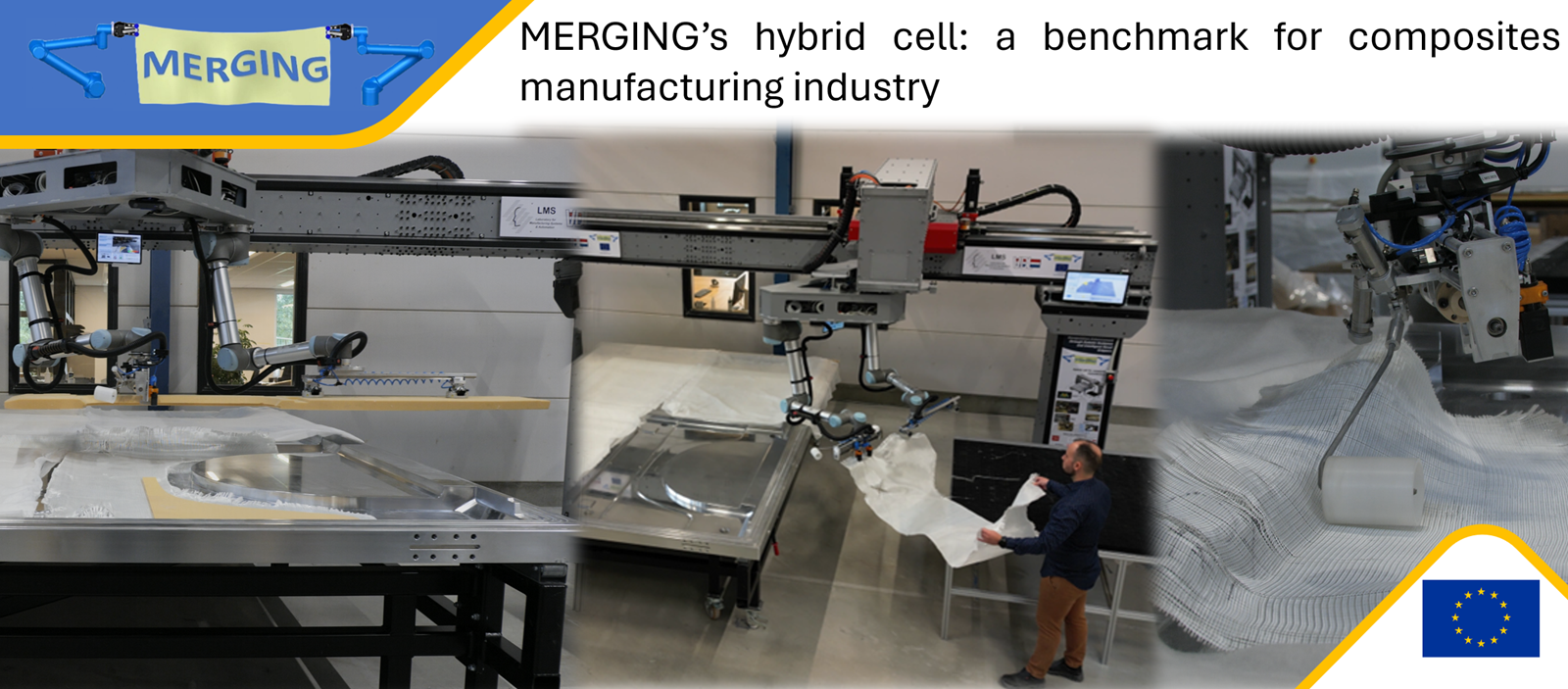The automotive sector was the first major application of industrial robots, and is still the main adopter of automation technologies, accounting for almost 30 % of all industrial robots that are currently operative worldwide. Yet, even in the automotive industry there are parts of the manufacturing process that are still difficult to automate, as is the case of the manufacturing of composite parts.
That is why MERGING, a European research project on soft robotics manipulation coordinated by CEA and involving 11 partners from industry and academia, has chosen the fabrication process of fiber composites in the automotive sector as one of its key use cases.
When used in the automotive sector, composites can provide increased strength and stiffness while also reducing the weight of vehicles up to 70% compared to metallic alloys. The possibilities to shape them are also limitless. They already play an important role in the advanced transportation industry, in particular when it comes to reducing fuel consumption and CO2 emissions.
However, fiber composites are still more expensive than lightest metallic alloys, and before they become cost-effective, a decrease of up to 40% in production cost is required. One of the ways to achieve this objective is automation, but these materials pose several challenges to existing robotic solutions. Dry fibers are similar to conventional textiles and thus, highly flexible and highly deformable. Foam blocks are less flexible, but fragile. These individual component parts can be heavy and large, adding further challenges for manipulation.
Currently, manufacturing processes involve a series of manual handling operations of flexible Glass Fiber (GF) textiles in addition to reinforcement foam blocks. The complete workflow takes place on lay-up molds where all types of GF textiles and foams are positioned before resin infusion. The dimensions of the mold itself limit operator access to all areas, resulting in fluctuations in the performance in terms of production rate and quality, in addition to ergonomic issues that can affect workers.
Within MERGING, researchers and engineers from several institutions have worked with VDL Fibertech industries, a member of the VDL group and one of the Netherlands largest composite producers that operates in several markets. Together, they have developed a robotic system that can support human operators in the manufacturing of large composite panels by performing grasping, manipulation and placement of textiles and foam blocks.
The envisioned solution proposes a hybrid cell where humans and robots collaborate within a fenceless environment. LMS, as pilot driver, led the engineering of the system by designing a custom overhead dual arm manipulator. Together with the project’s research partners, namely CEA and AIMEN, besides its integrators, CASP and OPTEAMUM, they have enhanced its dexterity, perception, cognition and interaction capabilities through state-of-the-art hardware and software modules.
Starting with dexterity, LMS designed a multi-tool end-effector that is able to handle all composite materials, or perform layup operations, without excessive and time costly tool changes. In terms of perception, LMS in collaboration with AIMEN, have deployed a number of perception modules for fabric localization and quality assurance, besides human tracking for safety and interaction purposes. Towards even greater cognition, LMS implemented a physical model that accurately simulates the fabric’s deformation within co-manipulation, in real-time. An extension of this model empowers model-based co-manipulation of fabrics either in collaborative schemes or fully automated ones. CEA led the implementation of closed-loop controllers that allow the co-manipulation of fabrics or fragile objects without the need of external sensors, thanks to impedance control, or using sensor-enhanced gloves (allowing also intuitive tele-operation of distant robot arms). Rapid robot and system programming is enabled by the SPIRE framework of CEA, as well as by the Workcell Controller package, of LMS. The former package offers an intuitive environment for system orchestration and monitoring during runtime. For human-centricity, LMS implemented extended reality applications where operators can interact with the digital twin or receive support through intuitive content.
Successful integration and evaluation campaigns proved that the implemented system achieved the project’s specifications and sets new boundaries for robotic automation in composites manufacturing.
The composite industry is only one of the three use cases explored by the project, which also applied similar technologies to food packaging and textiles for clothing industries. MERGING is a four-year project, coordinated by CEA (Commissariat a l’Energie Atomique et aux Energies Alternatives) in France, and it is involving academic and industrial partners from six countries: LMS (Greece), EPFL (Switzerland), AIMEN (Spain), SELMARK (Spain), VDL (Netherlands), Thimonnier (France), OMNIGRASP (Italy), IPC (France), CASP (Greece), and Opteamum (France).
For more information: merging-project.eu
Media contact: andronas@lms.mech.upatras.gr

This project has received funding from the European Union’s Horizon 2020 research
and innovation programme under grant agreement No 869963.

